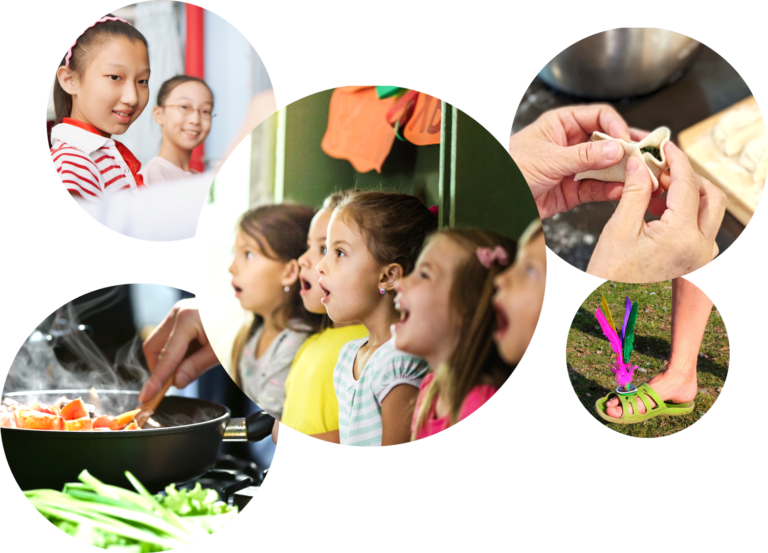Mastery Chinese
Weekend Chinese immersion classes for children K-6
Mastery Chinese is a new course that brings together TPR, story-making, and hands-on activities in an immersion setting. Lessons are designed around mastering key content with abundant opportunities for practice and application in new situations. This measured approach ensures students are not just learning the language, but also internalizing it as well. We follow best practices in the fields of immersion and second language acquisition by creating fun and engaging activities that maximize the language input that students receive.
Professional
We are experienced, full-time educators
Independent
We do not accept outside funding
Immersive
Learn in the language, not just about the language
Engaging
Make new friends through an interactive curriculum
What makes Mastery Chinese special?
Mastery Chinese is built on a foundation of comprehensible input (CI) approaches, which have been widely recognized as being the primary driver of language development. Incorporating well-known CI approaches such as Dr. James Asher’s Total Physical Response (TPR) and Blaine Ray’s TPR storytelling, Mastery Chinese was created from the ground up to adapt the best of CI with elements of Chinese culture, such as:
Storymaking and dramatization
Chinese stories and games
Songs and Music
Cooking, crafts, and more!

Program information
Class size: 4-8 students
Fall semester: 18 session (Sept 16, 2023 — Feb 3, 2024)
Spring semester: 18 sessions (Feb 10, 2024 — June 15, 2024)
Time: 2.5 hours on Saturdays in the morning or afternoon (times TDB)
Location: Media or Radnor
Tuition: $80 per session (10% discount when you pay for the semester in full)

Class levels
Students can enter into one of two classes based on where they feel comfortable
Beginning
Description
For children starting for the first time, or with limited prior experience.
Oral Development
Students begin in the pre-production stage, eventually learning to put together simple sentences in the target language.
Literacy Development
Students develop fluency in Pinyin, and learn foundational characters and radicals. They may read short sentences.
Intermediate
Description
For children with prior experience interacting with others in Chinese, including heritage language speakers.
Oral Development
Students gain fluency in more complex sentences and in a greater variety of topics. They are able to explain reasons, ask for and provide more details, and use appropriate language for the situation most of the time.
Literacy Development
Students read a greater variety of simple sentences in characters. They are able to identify patterns and meanings within characters to aid their learning.
| Description | Oral development | Literacy development | |
|---|---|---|---|
| Beginning | For children starting for the first time, or with limited prior experience. | Students begin in the pre-production stage, eventually learning to put together simple sentences in the target language. | Students develop fluency in Pinyin, and learn foundational characters and radicals. They may read short sentences. |
| Intermediate | For children with prior experience interacting with others in Chinese, including heritage language speakers. | Students gain fluency in more complex sentences and in a greater variety of topics. They are able to explain reasons, ask for and provide more details, and use appropriate language for the situation most of the time. | Students read a greater variety of simple sentences in characters. They are able to identify patterns and meanings within characters to aid their learning. |
FAQ
For Fall 2023, we will be starting with a beginning class (for students with no prior experience) as well as an intermediate class. Students will be placed into the appropriate class based on their Chinese proficiency. Within each class, the activities we chose are also differentiated to allow for variations in Chinese proficiency and even learner style. Finally, our small class sizes give us the ability to make sure every child is engaged and learning.
It definitely can be. However, Mastery Chinese was developed to be accessible, gradual, and fun. We do not encumber learners with hundreds of Chinese characters while they are still internalizing the basic patterns of the language. This is neither natural nor enjoyable; even native speaking children in China undergo many years of language input and production before they are formally introduced to the Chinese writing system.
Mastery Chinese starts by teaching children the Pinyin system of romanization in order to form a link between the new sounds of Chinese and the familiar sounds of their native language. We then gradually introduce Chinese characters by focusing on the patterns and meanings inherent within them. Because Chinese characters represent not sounds but ideas, we can connect them to children’s own lived experience. And along the way, we might even be able to learn a bit about China’s history, stories, and culture. In academic terms, students learn to decompose, analyze, and make predictions about the writing system, thereby developing core literary skills.
Comprehensible input (CI) means language that students receive which they can understand, or comprehend. In CI approaches, students acquire the meaning of the second language in a natural way, often through gestures, movements, and visuals. This approach was championed by researcher Stephen Krashen, and is closest to how humans learn their first language. It is also considered more enjoyable than other forms of language learning, such as memorizing vocabulary or sentence chunks and putting them together.
